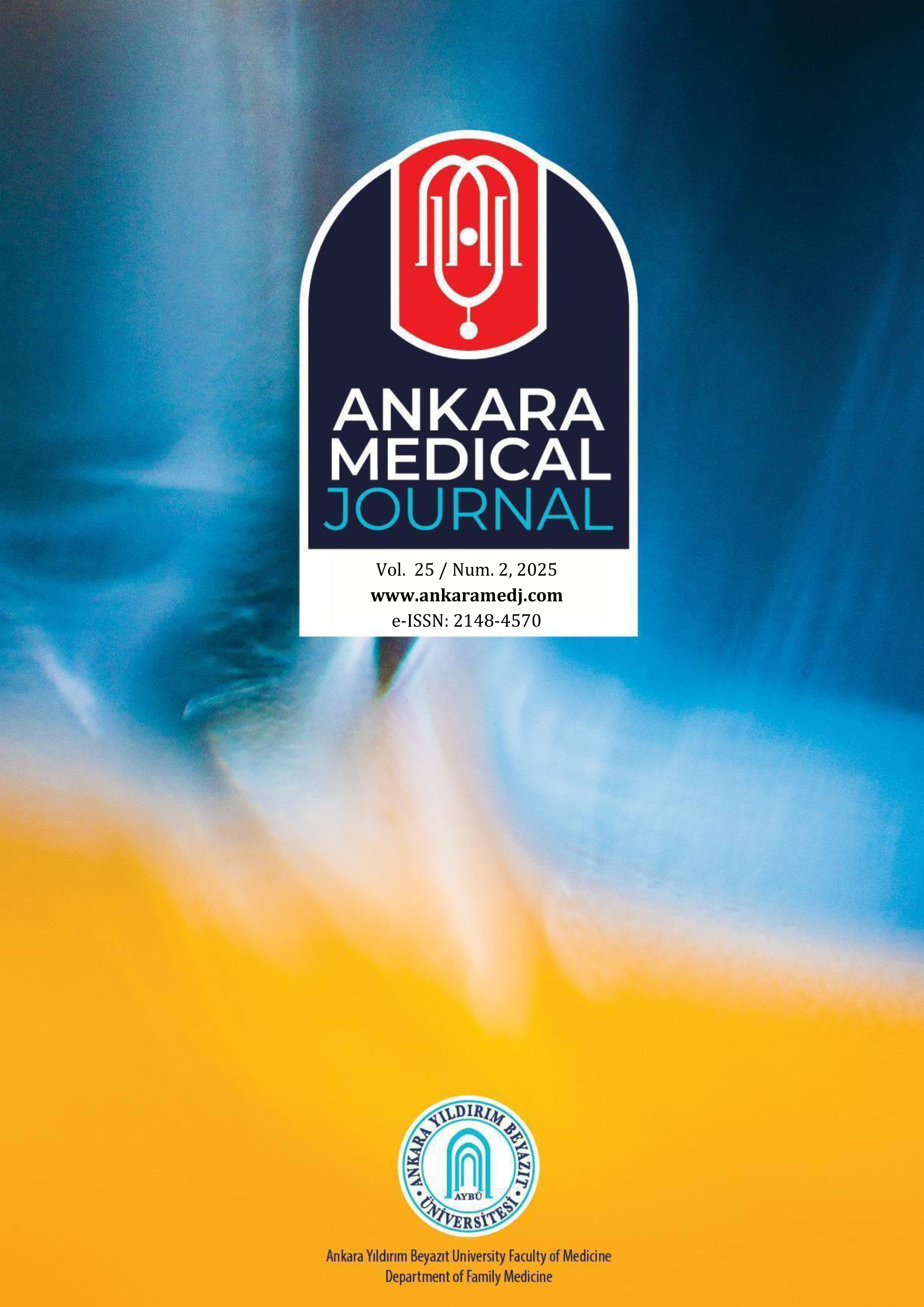Obez Bireylerde Yeme Bağımlılığı ve İlişkili Faktörler: Hastane tabanlı bir çalışma
Hacer Hicran Mutlu, Mehmet Sargınİstanbul Medeniyet Üniversitesi Tıp Fakültesi, Aile Hekimliği Ana Bilim Dalı, İstanbulGİRİŞ ve AMAÇ: Yeme bağımlılığı, son zamanlarda çok tartışılan ve obeziteye neden olan non-homeostatik bir davranıştır. Bu çalışmada obezite polikliniğimize başvuran bireylerde yeme bağımlılığı sıklığı ve ilişkili faktörleri saptamayı amaçladık.
YÖNTEM ve GEREÇLER: 6 aylık zaman diliminde, bir eğitim ve araştırma hastanesi obezite polikliniğine başvuran ve çalışmamıza katılmayı kabul ettiğine dair yazılı onam veren 202 kişiye Yale Yeme Bağımlılığı Ölçeği ve Depresyon, Anksiyete, Stres-21 Ölçeği doldurtuldu. Bütün örneklemdeki yeme bağımlılığı oranı ve bu iki grubun özellikleri arasındaki farklar değerlendirildi.
BULGULAR: Çalışmamıza katılan kişilerdeki yeme bağımlılığı oranının %35,10 olduğu tespit edildi. Yeme bağımlılığı olan ve olmayan gruplar arasında yaş, cinsiyet, sigara içme durumu, çocukluk çağında ve ailede obezite varlığı ve egzersiz alışkanlığı açısından fark bulunamadı. Yeme bağımlılığı olan grubun vücut kütle indeksi (VKİ) olmayan gruba göre anlamlı olarak daha yüksek bulundu. Depresyon, anksiyete ve stres skoru yeme bağımlılığı olan grupta anlamlı olarak daha yüksekti.
TARTIŞMA ve SONUÇ: Çalışmamamızda, obez bireylerde yeme bağımlılığı oranının yüksek olduğu sonucuna vardık. Bu nedenle, yeme bağımlılığının erken dönemde tanı alması ve tedavi edilmesinin obezite tedavisine önemli katkısı olacağını düşünmekteyiz.
Food Addiction Prevalence and Related Factors Among People with Obesity: A Hospital-based Study
Hacer Hicran Mutlu, Mehmet SargınDepartment Of Family Medicine, Istanbul Medeniyet University, Istanbul, TurkeyINTRODUCTION: Food addiction which is a non-homeostatic behavior that contributes to obesity is a highly discussed issue recently. In the present study, we aimed to determine the prevalence of food addiction among obese people and related factors who applied to our obesity outpatient clinic.
METHODS: Yale Food Addiction Scale (YFAS) and Depression, Anxiety, Stress Scale (DASS)-21 were applied to the 202 participants admitted to a Training and Research Hospital obesity outpatient clinic within 6 months who gave written consent. The patients were divided into two groups as individuals with and without food addiction. The prevalence of food addiction in the total sample and the difference between the two groups were evaluated.
RESULTS: The prevalence of food addiction among participants was 35.10%. There were no significant differences between the groups with and without food addiction in terms of age, gender, smoking status, having a history of childhood obesity, a family history of obesity, and exercising habit. The Body Mass Index (BMI) of the group with food addiction was significantly higher than the group without food addiction. The depression, anxiety, and stress scores of the participants with food addiction were significantly higher than those without food addiction.
DISCUSSION AND CONCLUSION: In this study, it has appeared that food addiction is prevalent among obese individuals. For this reason, we consider that early diagnosis and treatment of this disorder will make a significant contribution to obesity treatment.
Makale Dili: İngilizce
(1255 kere indirildi)





